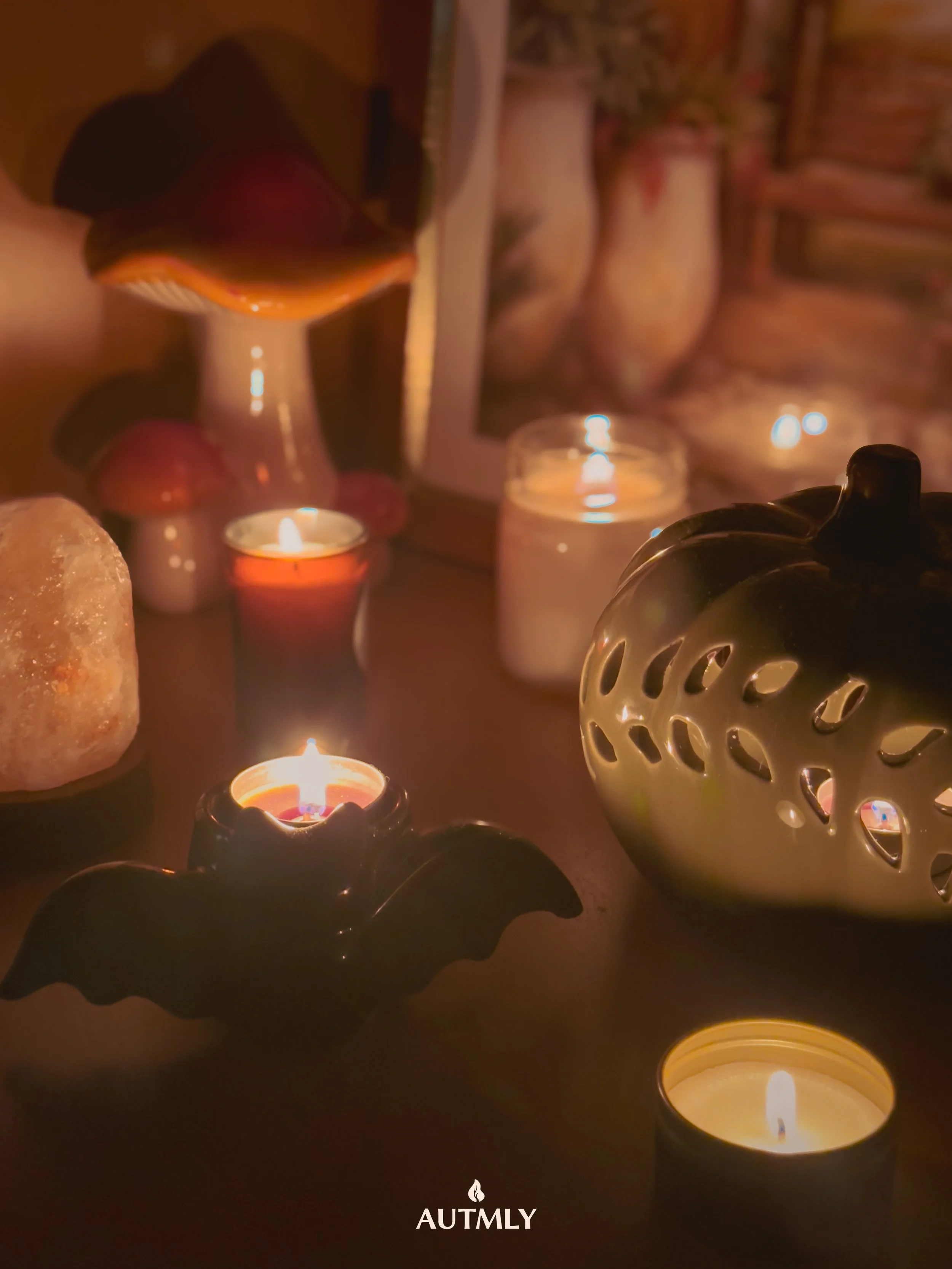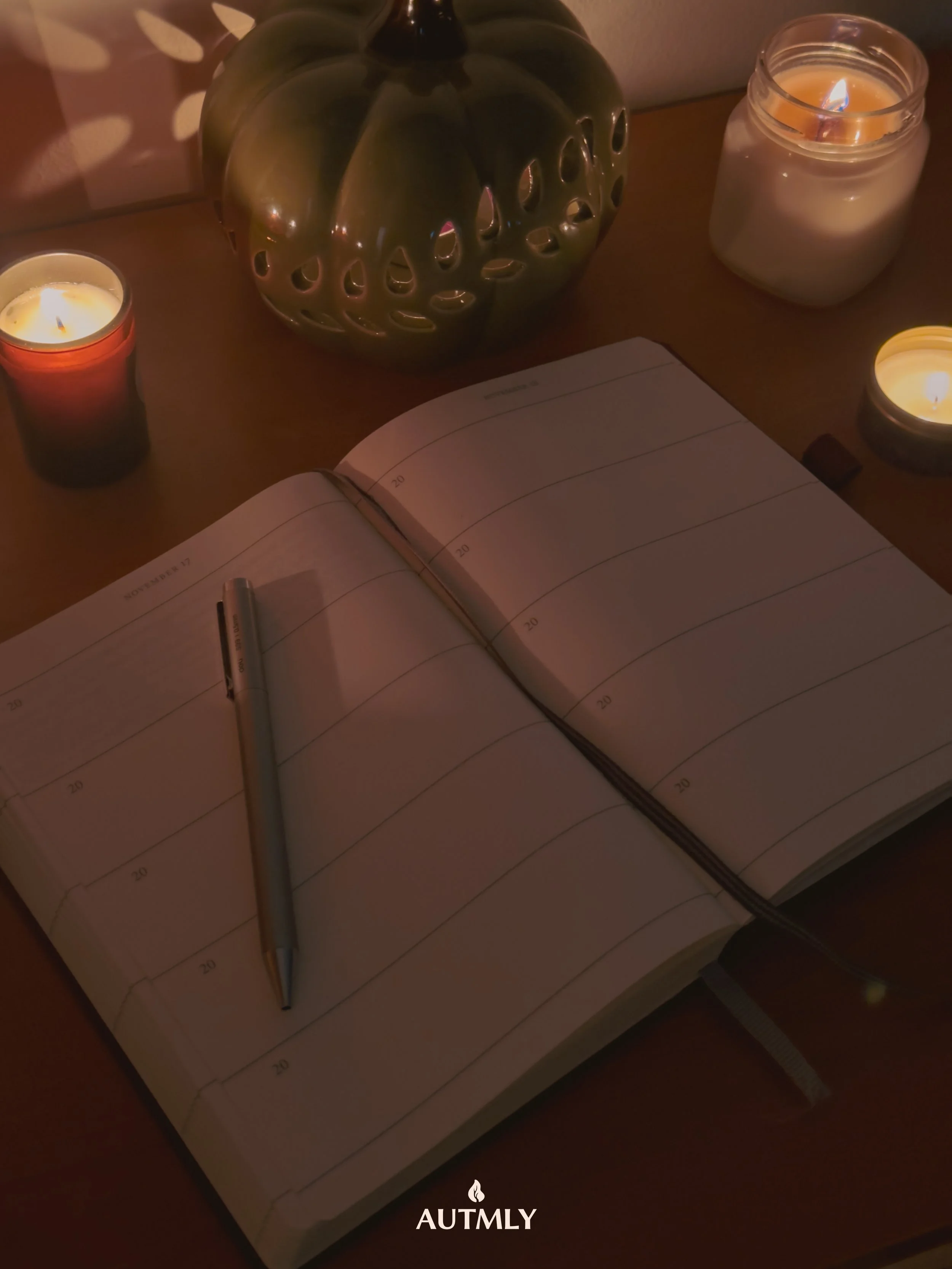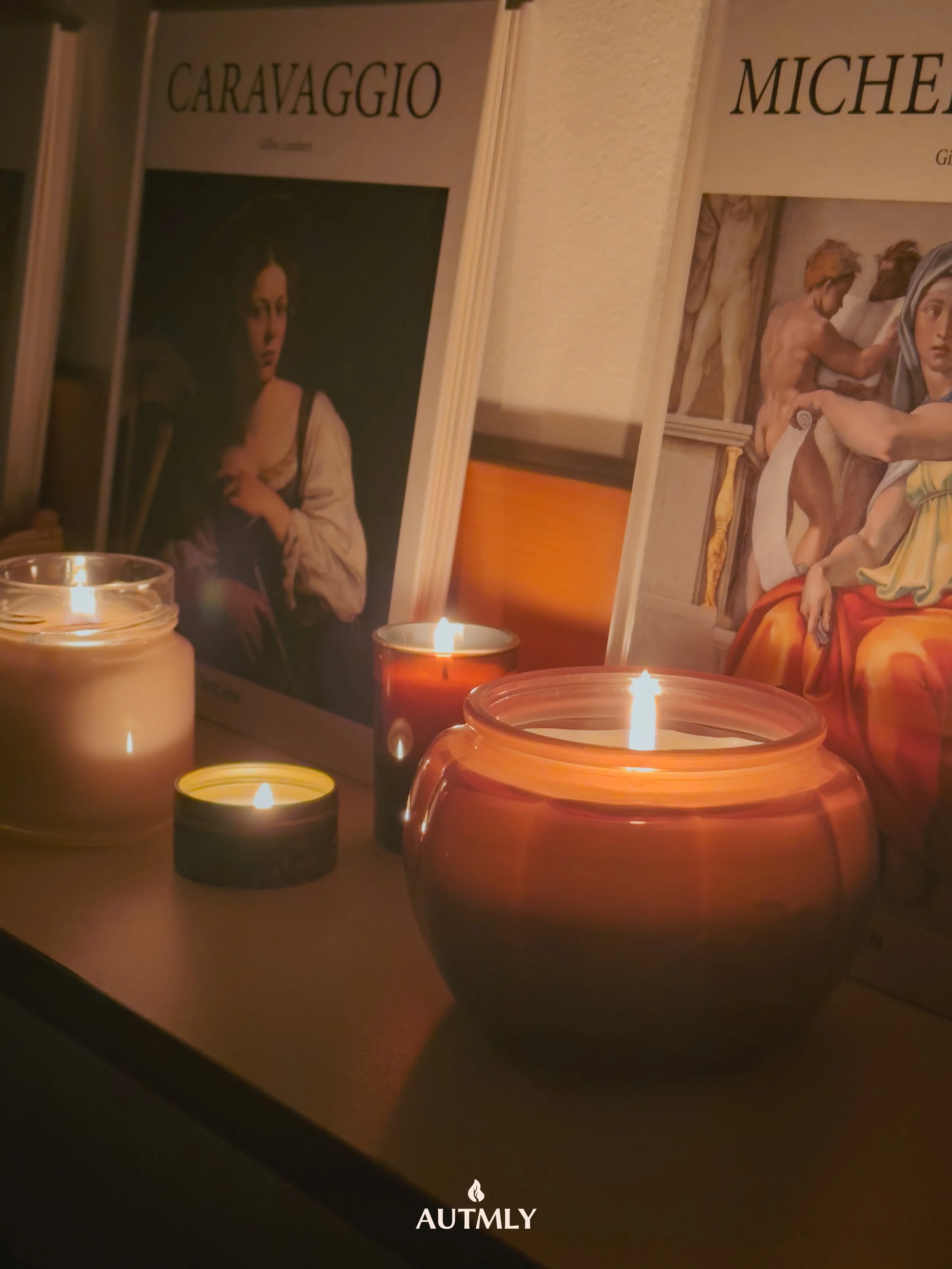Candlelight Comfort: How Soft Light Soothes The Mind
There’s something magical in the soft flicker of a candle. A warm glow that seems to soften the edges of a busy day and instantly make you slow your pace. I've been lighting candles every evening for the past few weeks, and I've noticed something extraordinary. The moment I dim the harsh overhead lights and watch that first flame come to life, something in me shifts. My shoulders drop, my breathing slows and the racing thoughts that filled my day begin to quiet.
It turns out this isn't just in my head. There's genuine science behind why the simple act of lighting a candle can feel like you’ve stepped into a different world.
A Light Older Than Memory
For over a million years, fire has been humanity's companion. Long before electricity, before even language as we know it, our ancestors gathered around flames. They didn't just do this for warmth or to cook food. Research suggests they did it because fire made them feel safe, connected, and calm.
When you light a candle, you're tapping into something ancient and deeply wired into who you are as a human being. Your brain recognizes this soft, flickering light and it remembers, somewhere in its evolutionary coding, that this light means safety. It means the day's work is done and you can finally rest.
A fascinating study published in Evolutionary Psychology found that watching fire actually lowers blood pressure. Researchers at the University of Alabama measured participants' blood pressure while they watched videos of fireplaces. The results were striking: those who watched fire with sound experienced an average five percent decrease in blood pressure. And the longer they watched, the more relaxed they became.
This isn't coincidence - it's evolution. Our ancestors who could relax around fire were more likely to bond with their community, to think creatively and to solve problems together. In many ways, the calming effect of firelight shaped how our brains developed.
The Science of Soft Light
The modern world operates on blue light and brightness. Our mornings start with screen glows, our workdays unfold under fluorescent hum and even our evenings are often lit by the harsh overhead lights that keep us in a state of perpetual alertness. But research on light and stress hormones reveals something crucial - the type and intensity of light we're exposed to directly affects our stress levels.
Studies have shown that bright light and blue light increase cortisol, our primary stress hormone. One study examining LED light exposure found that after just one hour of bright light in the morning, participants showed significantly elevated cortisol levels compared to those exposed to dim or red light. On the other hand, dim light in the evening (around the intensity of candlelight - approximately three lux), has minimal effect on cortisol production. This is exactly what our bodies need as night approaches. We need that signal that says: It's safe to wind down now.
Creating Your Evening Ritual
If you're feeling the weight of anxiety, if your mind feels cluttered and your nervous system feels frazzled, I invite you to try something this week:
Choose Your Time - Pick a time each evening when you can commit to at least 15-20 minutes of gentle unwinding.
Prepare Your Space - Turn off the overhead lights. Put your phone in another room. Create a small corner that's just for you and your candlelight.
Try Trataka (candle-gazing) - Sit comfortably, place the candle at eye level about an arm’s length away. Gaze at the flame for 2–5 minutes, then close your eyes and imagine the flame. Breathe slowly. This can help shift your nervous system into a calm mode.
Pair with a restful activity - You don’t have to meditate or do something special. Light a candle while journaling, stretching, or listening to ambient music. Let the flame serve as an anchor for your attention. The goal is presence.
Let Your Mind Settle - Notice how, after a few minutes, your breathing naturally deepens and the racing thoughts begin to slow. This is your nervous system responding to the environment you've created.
Things to Keep in Mind
Be safe - Burn candles on a stable surface. Keep away from anything flammable. Never leave burning candles unattended.
Air quality matters - Burning candles releases small particles. If used often, make sure the room is ventilated.
Unscented candles are often the better choice - While scented candles can be lovely, they sometimes contain synthetic fragrances or paraffin-based oils that release volatile organic compounds (VOCs) when burned. Those substances may irritate the respiratory system or trigger headaches and allergies in sensitive individuals. Unscented candles made from beeswax or soy produce fewer additives and offer the same calming visual glow without overwhelming the senses.
Candlelight is a tool, not a cure - It’s wonderful as part of a calming ritual, but it’s not a replacement for therapy, rest, or other self-care practices.
Your Invitation
What would it feel like to end your day differently tonight? To choose soft light over bright screens and to give yourself permission to simply be, rather than constantly do?
I'm not suggesting that candlelight will solve everything. Anxiety is complex, and if you're struggling, please reach out for professional support. But I am convinced that sometimes the smallest practices and gentlest rituals can offer us exactly what we need: a moment to breathe, to settle and to come back to ourselves.
Light a candle tonight. Watch its flame dance. Let your shoulders drop. Let your breathing slow. Let yourself, just for a little while, simply be.
Thank you for reading and I hope I see you next time. 🍂
Keep your heart cozy - no matter the season.
——————————————————————————
Sources for this article:
Lynn, C.D., Snodgrass, J.J., & Bernard, H.R. (2014) - "Hearth and campfire influences on arterial blood pressure: defraying the costs of the social brain through fireside relaxation"
https://pubmed.ncbi.nlm.nih.gov/25387270/
2. Matt Rossano (Psychologist, Southeastern Louisiana University) - Research on fire and brain evolution
https://www.imaginfires.co.uk/blogs/news/why-is-fire-so-calming-health-benefits
3. Christopher Lynn (University of Alabama) - Lead researcher on fire and blood pressure study
https://www.huffpost.com/entry/the-evolutionary-reason-w_n_6171508
4. Dr. Annie (Brainwave Research) - "Candlelight's Calming Effects"
https://www.docannie.com/candlelights-calming-effects/
5. Merkmal Co. / Prof. Yuji Ikeya, University of Tokyo (2019) - Study on brainwave response to real flame
https://ecosmartfire.eu/blog/the-science-of-calm-connection-and-fire
6. 2020 Study on Trataka and Insomnia
https://www.healthline.com/health/candle-meditation
7. Yoga and Ayurveda Research on Trataka
https://www.healthline.com/health/candle-meditation and https://hozhoparis.com/en/blogs/blog/meditation-a-la-bougie-techniques-et-bienfaits
8. Petrowski, K., Bührer, S., Albus, C., & Schmalbach, B. (2021) - "Increase in cortisol concentration due to standardized bright and blue light exposure on saliva cortisol in the morning following sleep laboratory"
https://pubmed.ncbi.nlm.nih.gov/32723201/
9. Gronfier, C., Wright Jr., K.E., Kronauer, R.E., et al. (2007) - "Acute Effects of Bright Light Exposure on Cortisol Levels"
https://pmc.ncbi.nlm.nih.gov/articles/PMC3686562/
10. Research on Candlelight and Parasympathetic Nervous System
https://www.evecandles.com/blogs/moments-of-light/the-psychology-behind-candlelight-and-well-being
11. Multiple Studies on Candlelight Psychology



